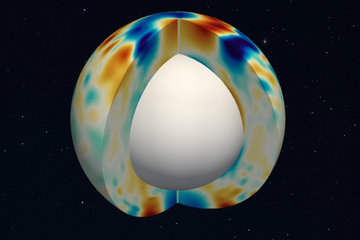All genres
1.
Journal Article
Local growth of dust- and ice-mixed aggregates as cometary building blocks in the solar nebula. Astronomy and Astrophysics 611, A18 (2018)
2.
Journal Article
Comet formation in collapsing pebble clouds. What cometary bulk density implies for the cloud mass and dust-to-ice ratio. Astronomy and Astrophysics 587, A128 (2016)
3.
Talk
Compression of pebbles in collapsing pebble clouds. Planet Formation and Evolution, Duisburg, Germany (2016)
4.
Poster
Comet formation in collapsing pebble clouds: pebble formation. American Astronomical Society, DPS meeting #48, Pasadena, USA (2016)
5.
Poster
Size matters? Monomer radius and the transition from fractal to compact ice aggregates. 615. WE-Heraeus-Seminar "How primitive are comets?", Bad Honnef, Germany (2016)











